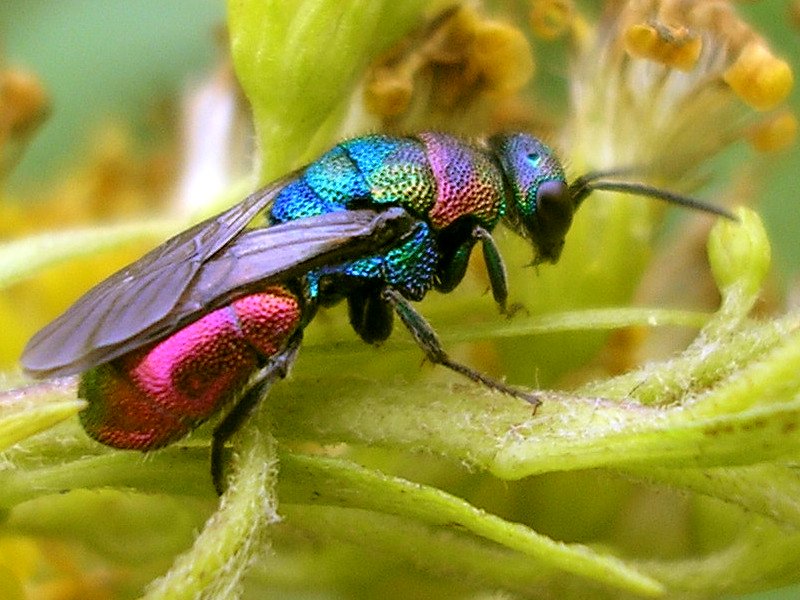|
| Query: Desert hedgehog | Result: 6th of 6 | |
Cuckoo Wasp (Family: Chrysididae, Subfamily: Chrysidinae) - Wiki
| Subject: | Cuckoo Wasp (Family: Chrysididae, Subfamily: Chrysidinae) - Wiki
| |

| Resolution: 800x600
File Size: 104298 Bytes
Upload Date: 2007:09:13 13:23:58
|
Cuckoo Wasp (Family: Chrysididae, Subfamily: Chrysidinae) - Wiki
Chrysidinae
From Wikipedia, the free encyclopedia
[Photo] This Chrysididae on a goldenrod was identified as Hedychrum rutilans (Dahlbom, 1854). Location: Boeldershoek, Hengelo (Overijssel), Netherlands. Date 2006-09-05. Author Pudding4brains (http://commons.wikimedia.org/wiki/User:Pudding4brains)
Family: Chrysididae
Subfamily: Chrysidinae
tribes
Allocoelini
Chrysidini
Elampini
Parnopini
The subfamily Chrysidinae contains those species that are most commonly recognized as cuckoo wasps, being by far the largest and most familiar subfamily. The group contains some 3000 species in 48 genera in 4 tribes worldwide. They are highly sculptured, with brilliantly colored metallic bodies, and capable of folding their bodies over (or, more commonly, rolling into a ball) as a defensive mechanism. They are most diverse in desert regions of the world, as they are typically associated with solitary bee and wasp species, which are also most diverse in such areas.
They are generally cleptoparasites, laying their eggs in host nests, where their larvae consume the host egg or larva while it is still young, then consuming the provisions. The other subfamilies are parasitoids, of either sawflies or walking sticks.
They are among the few groups within the Aculeata that cannot sting; the ovipositor is tube-like, and used to slip the eggs into the host nests. These wasps' only defenses, therefore, are passive; the heavily sculpted integument (which reduces the risk of being bitten or stung by an angry host), and their ability to cover up their vulnerable limbs and appendages when threatened by rolling up (much like a hedgehog).
They have a characteristic "scurry and fly" search pattern when looking for hosts that is quite distinctive, even when seen from a distance. They land on a surface, typically either soil or wood, and scurry a short distance, in quick, hesitant spurts, with their antennae quivering vigorously as they go - and then they abruptly take off, typically only flying a short distance before landing again and repeating the maneuver.
http://en.wikipedia.org/wiki/Chrysidinae
| The text in this page is based on the copyrighted Wikipedia article shown in above URL. It is used under the GNU Free Documentation License. You may redistribute it, verbatim or modified, providing that you comply with the terms of the GFDL. |
|
^o^
Animal Pictures Archive for smart phones
^o^
|
|